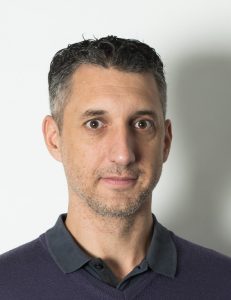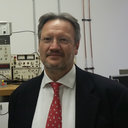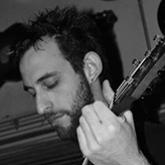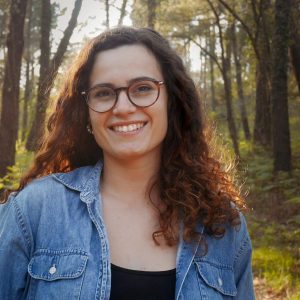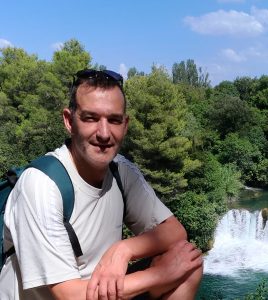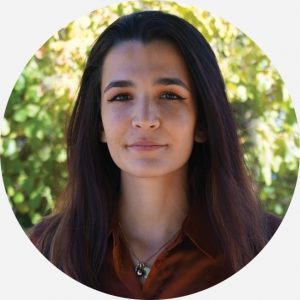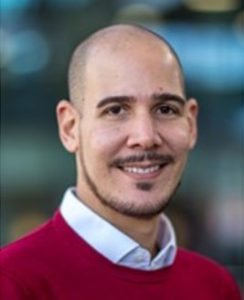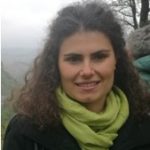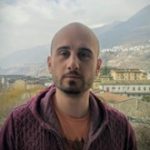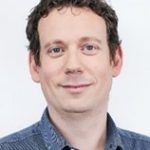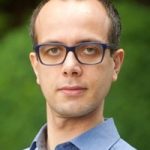
NEUREKA is a partnership between 5 institutions
- Partners
- The FORTH Team
- The CNRS-LAAS Team
- The UNIMIB Team
- The UNIPD Team
- The Maxwell Biosystems Team
The Partners
Coordinator: Foundation for Research and Technology- Hellas (FORTH)
The Foundation for Research and Technology – Hellas (FORTH) established in 1983, is the largest and most prestigious research center of Greece with well-organized facilities and highly qualified personnel. It consists of seven research institutes located throughout Greece. Over the years, FORTH has become one of the top European research centers. From a total of 62 ERC grants awarded since 2007 to scientists hosted at Greek institutions, 21 are located at FORTH. According to the fifth FP7 monitoring report, FORTH ranked 13 among all European research organizations in FP7 signed grant agreements in terms of counts of participations for the period 2007-2011.
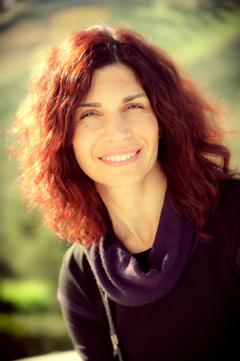
Dr. Panayiota Poirazi
Dr. Poirazi is the Project Coordinator of NEUREKA. She is Director of Research and the Head of the Dendrites lab (www.dendrites.gr) at FORTH-IMBB. Dr. Poirazi received her Bachelor in Mathematics with honors from the University of Cyprus in 1996. She received her Master and Ph.D. in Biomedical Engineering (Computational Neuroscience) also with honors in 1998 and 2000, respectively, from the University of Southern California in Los Angeles. From 2001-2004 she worked as a postdoctoral/Marie Curie fellow first in the Biomedical Science Research Center ‘Alexander Fleming’ in Athens (2001-2002) and then at FORTH-IMBB (2002-2004). In 2002, at the age of 28, she was elected as the youngest researcher at IMBB-FORTH (appointed in 2004). Dr. Poirazi’s (https://dendrites.gr/) research interests lie in the field of computational modeling of biological systems with emphasis in the areas of Neuroscience. She is particularly interested in understanding how dendrites contribute to information processing and memory formation across multiple areas of the brain. Her research team currently consists of 3 postdocs, 4 Ph.D candidates, 3 Master and 2 undergraduate students. The team carries out internationally competitive research and produces high-profile publications (>80 scientific publications, >2500 citations, h index 22, i10th index 38, Google Scholar). Dr. Poirazi has extensive experience in attracting and managing competitive research grants. Her work has thus far been supported by a total of 25 national and international grants, in 15 of which she was the coordinator. These include an ERC Starting Grant (2012), 5 Marie Curie grants, an EMBO YIP grant, an NSF grant, and several national grants. The total funding secured for her team thus far exceeds 3 million Euro. [Scholar]
University of Padova (UNIPD)
UNIPD is a leading University in Italy and with a long tradition of scientific excellence. It offers a number of scientific facilities and it has specific expertise on the management of European projects. UNIPD will coordinate the project. The scientific and technical work will be mainly carried out in the Padua Neuroscience Center (PNC, http://pnc.unipd.it), where Dr. Vassanelli is leading the NeuroChip laboratory (http://www.vassanellilab.eu). The PNC, directed by M. Corbetta, is a multidisciplinary center dedicated to investigate the structural and functional organization of the brain at multiple spatial and temporal scales, from single neurons to microcircuits and from mesoscale networks to the whole brain.

Prof. S. Vassanelli, (MD, PhD)
PI, NeuroChip lab leader and Associate professor in Physiology. SV has pioneered the use of capacitive recording and stimulation with transistors and semiconductor-oxide-electrolyte (EOS) devices[1]. SV has recently coordinated the RAMP project (FP7,#612058, www.rampproject.eu) providing the proof-of-concept that neuromorphic spiking neurons on chip can be linked in vitro to biological neurons through memristors (Serb et al., 2016). S. Vassanelli is Cofounder of two spin-off companies: BioSilab srl and Narvalus srl. SV’s expertise covers high-density electrophysiology (recording and stimulation) in vitro and in vivo, brain-chip interfaces, neural networks physiology and modelling, neuromorphic computing and memristor devices and their application to the processing of neural signals.
https://www.vassanellilab.eu/ [Scholar]
Centre national de la recherche scientifique (CNRS-LAAS)
With a large number of permanent researchers, engineers, post-docs and PhD students (700) as well as strong interactions with industry, the Laboratoire d’analyse et d’architecture des systèmes (LAAS-CNRS) is situated at the crossing between scientific research, innovation and applications, where science meets nanotechnology in close connection with society. The LAAS-CNRS possesses one of the most important technological installations dedicated to research in Europe, with an ultra-modern cleanroom of 1600m² and new bio facility dedicated to the development of research at the interface of the applied physics and biology.
Dr. Guilhem Larrieu is Director of Research atCNRS, working at LAAS-CNRS laboratory in Toulouse (France)and Research Fellow at the University of Tokyo (Japan). He is leading an activity on Nano-&Neuro-Electronics(NNE lab) aiming at developing new devices based on functional nanostructures for ultimate nanoelectronics and for innovative biosensor platforms in particular for neural interfacing. These activities are articulated around nanotechnologies, nanodevice, nanoelectronics, cell cultures and electrophysiology.He received a Ph.D. degree in Electronics in 2004 (Univ. Lille), then obtained a post-doctoral fellowship at the University of Texas at Arlington (UTA). In late 2005, he secured an independent researcher position at IEMN-CNRS laboratory in Lille on MOS transistor technology. In 2010 he moved to LAAS-CNRS to establish a new research axis on vertical nanowirebased-devices. From 2019-2021, he was an Invited Researcher at the University of Tokyo to extend its nanoelectrode concepts to interface with high resolution human organoids. His lab is currently composed of 2 post-doc, 2 technical staff members and 6 PhD students. He has regularly participated in or coordinated research proposals in response to local, national or European calls for projects (in particular 1 FETOPEN, 1 FET-PROACT, 2 ICT, 2 STREPs, 2 NoE). Overall, he has supervised 14 PhD students and 8 Post-Doc researchers which now either obtained academia positions (assistant prof. Univ Marseille, Univ Toulouse) or in the semiconductor industry (Huawei, STMicro, XFAB, Tronics …). He is the author/co-author of over 60 papers in peer-reviewed international journals, 13 patents as principal investigator, and more than 30 invited contributions to conferences.
[Scholar]
University of Milan Bicocca (UNIMIB)
The University of Milano Bicocca (UNIMIB) hosts a well-established internationally-renowned research activity in the field of semiconductor nanostructures, metals and dielectrics, and it guarantees the required amount of human, financial, and structural resources requested by the dimension and time of the project. The expertise of the scientific representative for UNIMIB in the area of physics and technology of semiconductors, high-k dielectrics, silicides, device fabrication and characterization, and technology transfer constitute a key ingredient for the success of the project.
Prof. Marco Fanciulli
Marco Fanciulli obtained his Ph.D. in Applied Physics at Boston University in 1993. From 1993 till 1997 he was Post-Doc at the University of Aarhus where in 1997 he was appointed Associate Professor. In 1998 he was hired by the Italian Institute for condensed matter physics (INFM) to set up a new Laboratory inside STMicroelectronics, the MDM Lab. In 2007 he joined as Full Professor the Department of Material Science at the University of Milano Bicocca while maintaining the leadership of the MDM Lab. till 2015. He has published more than 380 papers and edited 2 books. He has coordinated or participated several EC, international national and industrial projects. He is Fellow of the American Physical Society. He has contributed to the development of nanoelectronics devices: materials and processes for ultra-scaled nanoelectronics devices and for innovative non-volatile memories (high-k dielectrics, silicides, low-k), single atom electronics, silicon nanostructures (silicon nanowires, quantum dots); spintronics: magnetic tunnel junctions, donors in silicon for classical and quantum information processing, and neuroelectronics (EOSC devices for neurosensors).
Maxwell Biosystems AG
MaxWell Biosystems (MxW), founded on September 1st, 2016 in Basel, Switzerland by Dr. Michele Fiscella, Dr. Urs Frey, Dr. Jan Müller and Dr. Marie E. Obien, is an official ETH Zurich spinoff (https://www.mxwbio.com). MxW develops and markets advanced electrophysiology platforms for cell assays in preclinical drug discovery, safety pharmacology and basic neuroscience research. MxW’s first product, MaxOne, is a high-density microelectrode array (HD-MEA) featuring 26’400 electrodes. The large array, the high spatial density of the electrodes with a pitch of just 17.5 μm, and the low-noise recording amplifiers allow for resolving minute subcellular signals. MxW’s technology can be used for neurons, cardiomyocytes and iPS cells in preparations such as acute brain slices and retina, dissociated cell cultures, organotypic slice cultures and embryoid bodies for phenotype screening, detailed single cell analysis, multi-parametric network analysis, drug efficacy testing, toxicity testing and more.
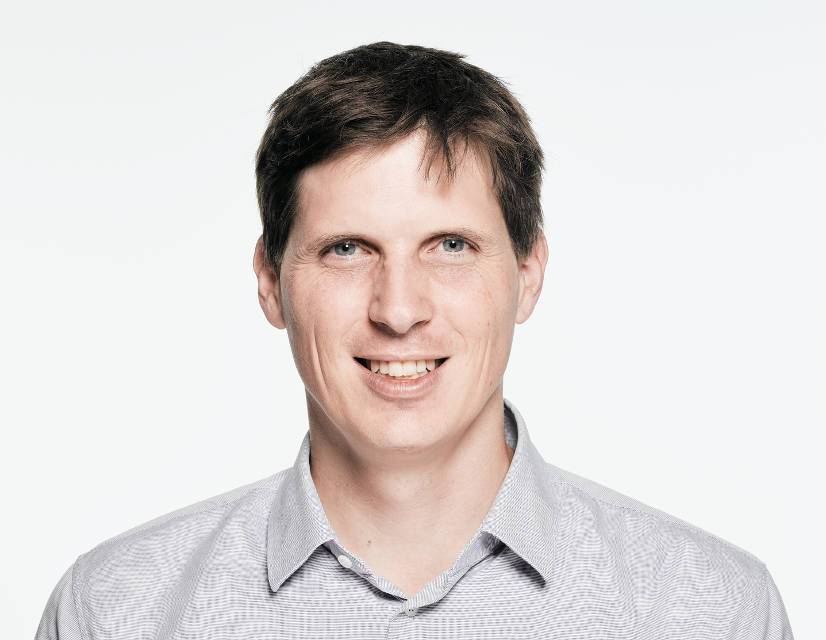
Dr. Urs Frey
Urs Frey is MaxWell Biosystems’ CEO, member of the founding team and serves as vice president on the company’s board of directors. Urs is running the company, is responsible for implementing the company strategy and driving business development. He is also heading financing and human resources. Urs earned his PhD in Electrical Engineering at ETH Zurich where he innovated the “switch-matrix” architecture now commonly used in microelectrode arrays. Following that, he moved to IBM Research, where he did a postdoc on mixed-signal circuit design. Later, Urs was heading an independent laboratory focusing on CMOS-based bioelectronics and biosensors at RIKEN, Japan. Recently, Urs completed a management training at the University of St. Gallen (Diploma of Advanced Studies, Leadership Development Program).
The FORTH Team
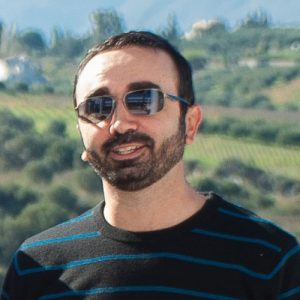 Dr. George Kastellakis (FORTH)
Dr. George Kastellakis (FORTH)
George is a postdoctoral fellow in the Poirazi Lab at IMBB/FORTH. He holds a B.Sc in Physics and holds a Master’s degree in Brain and Mind sciences and a PhD in Computational from the University of Crete. His research interests lie in the modeling of memory functions and memory engrams using computational methods that incorporate recent discoveries about the biophysical substrates of memory. This research started with his PhD thesis titled “Dendritic contributions to neuronal and synaptic memory allocation” in 2016 under the supervision of Dr. Panayiota Poirazi, which focused on modeling plasticity at multiple spatial scales: dendritic, neuronal and network level. His work showed that memories can become linked across time via synapse clustering in active dendrites (Cell Reports, 2016). Further development of this work explores the effects of synaptic turnover in the properties of memory engrams as well as the effect of dendritic nonlinearities in inhibitory plasticity. He has extensive experience in designing, developing, analyzing models of neurons and neuronal circuits using detailed biophysical and compartmental modeling, as well as phenomenological and spiking models. [Scholar]
Spyridon Chavlis received his diploma degree in mechanical engineering from the National Technical University of Athens, Athens, Greece, in 2011, his M.Sc. degree in biomedical engineering from Imperial College London, London, U.K., in 2013, and his Ph.D. in Biology from the University of Crete, Heraklion, Greece, in 2018. During his doctoral studies, he developed a computational model of the hippocampal dentate gyrus examining the role of dendrites in the pattern separation mnemonic process. He is a Postdoctoral Researcher in computational neuroscience with the Poirazi Lab, IMBB-FORTH. He is interested in unraveling the underlying mechanisms of memory formation and learning using computational models of the hippocampal subregions and incorporating them in bio-inspired deep learning architectures.
Michalis Pagkalos is a PhD student in the Poirazi Lab at IMBB/FORTH. He holds a BSc in Biology and an MSc degree in Molecular Biology and Biomedicine, both from the University of Crete. His MSc thesis was also supervised by Dr Panayiota Poirazi and titled “Investigating the role of dendrites in pattern completion by means of computational modelling”. His current research focuses on unravelling the role of active dendritic mechanisms in hippocampal memory functions. He has extensive experience in developing reduced yet biologically realistic compartmental models that are optimal for large-network simulations.
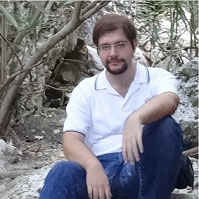 Konstantinos Petousakis (FORTH)
Konstantinos Petousakis (FORTH)
Konstantinos Petousakis is a PhD candidate in the Dendrites Lab headed by Dr. Poirazi. He graduated from the University of Crete, Department of Biology in 2015. He then completed the “Brain and Mind” Master in the University of Crete, Department of Medicine in 2019. Immediately thereafter, he started his PhD under Dr. Poirazi’s supervision. During this brief career, he has made use of computational models – both single-cell and small-scale – to answer questions relating to the function of neurons in different brain areas.In addition, he is interested not only in computational models of neurons, but also Artificial Intelligence and Machine Learning. His undergraduate thesis investigated the effects of age on persistent activity using a microcircuit model. In his Master thesis, he used a single-cell model to investigate the contribution of the dendrites in shaping orientation selectivity in L2/3 V1 pyramidal neurons. Currently, inspired by the results previously achieved, he is further exploring orientation selectivity in V1. He has received a scholarship for his work by the Leventis Foundation.
The CNRS-LAAS Team
Inès Muguetis a PhD student at the LAAS-CNRS (Toulouse, France), specialized in nanotechnologies for healthcare.She joined Dr. Larrieu’s team in 2019, after completing a Master’s degree in Chemical Engineering at the Graduate School of Biology, Chemistry and Physics (ENSCBP) in Bordeaux, France. During her studies, Ines carried out some research work on “Plasma functionalization and deposition techniques for tailored surfaces” at the University of Auckland, New Zealand. She also worked on the “Development of a novel microfluidic device for prostate cancer diagnosis via cell and exosome capture” at the University of South Australia in Adelaide, Australia. Here, Ines focuses on producing the microchips and improving their performances using coating layers. She is also involved in the recording and stimulation of the neuronal activity.
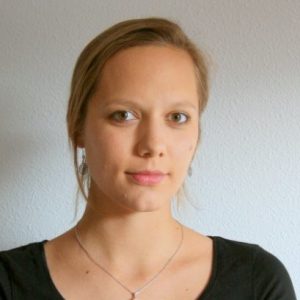 Dr. Aziliz Lecomte (CNRS-LAAS)
Dr. Aziliz Lecomte (CNRS-LAAS)
Aziliz Lecomte received her M.D. in Physics Engineering in 2013 from INSA Toulouse, and her Ph.D. in 2016 from the Laboratory for Analysis and Architecture of Systems (LAAS-CNRS), where she worked on flexible polymer-based neural probes for chronic implantation. In 2016, she received the l’Oréal-Unesco grant “For Women in Science”. From 2019 to 2021, she was a post-doctoral fellow at the IstitutoItaliano di Tecnologia, in the Microtechnology for Neuroelectronics team lead by Dr Luca Berdondini. During this time, she has worked on micro and nanostructuration of high-density CMOS-based neural devices, as well as the integration of CMOS microdevices in cortical spheroids. She has joined to Neureka consortium in 2020 as a postdoc in Dr. Larrieu’s team, to develop methods and processes to integrate vertical nanowires on CMOS-based high-density microelectrode arrays (MEA). Her area of expertise include micro-nano-fabrication, biomaterials and neural engineering.
Fabrice Mathieu is an electronics research engineer at LAAS CNRS in Toulouse, France, since 2001. He is specialized in detection and processing of low signals applied to micro and nano technologies.He develops hybrid electronic detection systems improving transduction effects, in particular in resonant MEMS applications or biological electronic interfaces.He is currently working on the development of in-media MEMS systems for the detection of microRNAs. He also works in viral detection systems using HEMT technology and architecture and physical measurement of the behavior of specific resonances of MEMS.In the NEUREKA project, he is developing the measurement system based on analog board coupled to a commercial acquisition setup and driven by home-made software to manage the interface between computer and NEA chips.
Emilie Belot is a PhD student at LAAS-CNRS in Toulouse, France. After completing a Master’s degree in Nanoscale Engineering at the University of Lyon 1 in Lyon, France, she joined Dr. Larrieu’s team to work on the development of nanoprobe array technology for high resolution electrophysiology of human brain organoids-on-chip. In NEUREKA, she is working on the hardware development of the NEA platform. ”
Frank Bardie received Master’s degree in electronic in 2020 at Toulouse Paul Sabatier university. Since 2021, he is working at LAAS-CNRS as electronic engineer developing electronics , interfacing systems and acquisition system for the measurement and analysis of Nano Electrode Array technology.
The UNIMIB Team
Dr. Valerio di Palma (UNIMIB)
Valerio Di Palma earned a bachelor degree in Chemistry in 2012 and a master degree in Chemical Sciences in 2014 from University of Bari. In 2015 he joined as PhD student the Plasma & Materials Processing group at Eindhoven University of Technology, focusing his work on the atomic layer deposition (ALD) of Pt nanoparticles and cobalt phosphate based materials for application in electrocatalysis. In 2020 he obtained a PhD in Applied Physics from Eindhoven University of Technology, with a thesis on ALD of electrocatalysts.
Since May 2020 he has been working as research fellow at the department of Materials Science of the University of Milano-Bicocca. His current work focuses on ALD of metallic and dielectric thin films and their electro-chemical characterization for application in neuroelectronics within the Neureka Project.
Andrea Pianalto (UMIMIB)
Andrea is an M.Sc. student who is participating in the NEUREKA project.
The UNIPD Team
Marta received her Master Degree in Biomedical Engineeringin 2012 at the University of Genova,and her PhD in “Neuroscience and BrainTechnologies”in 2016 at the Italian Institute of Technology working in Michela Chiappalone’s team. During her PhD, she acquired the competencies necessary for realizing primary neuronal networks with the aim of combining biology and engineering for neuro-robotic applications. Furthermore, she gained expertise inanalysis of signals acquired performing electrophysiological experiments on in vitro neuronal networks.
Afterward, she spent her first three years of Post Doc under the supervision ofMaurizio Corbetta, at the Department of Neuroscience (University of Padova), gaining experience in PET and MRI acquisitions of stroke and neuro-oncological patients, and working on developing a pipeline for MRI data analysis.
Finally, in the last two years, she has been working in Stefano Vassanelli’s team,at the Department of Biomedical Sciences (University of Padova),investigating electrophysiological signals coming fromin vivo modelsboth in the temporal andfrequency domain, with the aim of extracting characteristic features for the development of a neuromorphic system
Mattia is a PhD student of the Padova Neuroscience Center (University of Padova).
He moved to Padova to work with Stefano Vassanelli’s team after receiving his master degree in Computer Science in 2019 at the University of Milano-Bicocca. Here he is mainly involved in recognition of intracortical neural activity and in microstimulation characterization.
He works to enhance in-vitro and in-vivo electrophysiology acquisition systems developing both software and hardware (on FPGA) algorithms for real-time data processing suitable for closed-loop experiments. He also works to develop experiments specific pipelines for data analysis and visualization.
Currently he focuses on a multidisciplinary european project aiming to connect the brain and a spiking neural network through neuromorphic synapses.
Marta Maschietto received her Master Degree in Biological Sciences in 2003 and her PhD in Genetics and Developmental Molecular Biology in 2007 at the University of Padova. Since 2003 she has been working in Stefano Vassanelli’s team, first as a PhD student and then from 2008 as a research assistant.
Her skills span from molecular to cellular biology and in vivo recordings in the field of neuroscience research. She is mainly involved in the neurosurgical procedures and in vivo recording/microstimulation of neuronal signals from different brain areas of anesthetized rodents (brain cortex, hippocampus, cerebellum). She is skilled in recordings and stimulations with different types of commercial and non-commercial multisite probes. She currently cultivates primary neurons dissociated from rodent hippocampi on planar microchips featuring multi-electrodes arrays. She is also involved in developing a capacitive electroporation technique on mammalian cell lines and primary neuronal cells growing in adhesion on microchips.
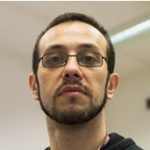 Dr. Alessandro Leparulo (UNIPD)
Dr. Alessandro Leparulo (UNIPD)
Alessandro Leparulo received his Master Degree in Biological Sciences at the University of Modena and Reggio Emilia in 2006and PhD in Biomedical, Endocrinological and Neurophysiological Sciences in 2010at the University of Ferrara where he learned the basics of cellular electrophysiology. During 2013 he moved to the University of Padua where he collaborated, as a post-doc researcher, in several projects related to the study of neurodegenerative diseases, such as Charcot-Marie-Tooth (CMTX), with Prof. Mario Bortolozzi, and Alzheimer’s disease with Prof. Cristina Fasolato and Prof. Stefano Vassanelli teams.
Specialized in electrophysiological techniques, imaging and in the use of high-density recording systemsin vitro and in vivo, now is mainly involved in the recording and analysis of neuronal signals from different brain areas of small mammals and from neuronal cultures.
The Maxwell Biosystems Team
Jan Müller is MaxWell Biosystems’ CTO and a member of the founding team and serves as the president of the company’s board of directors. Jan is responsible for software and hardware development, implementing the technology strategy, quality assurance and technical support. Jan is the expert in MEA technology and the inventor of our core 26,000 microelectrode array. Jan obtained his PhD from ETH Zurich (D-BSSE). He has an interdisciplinary background in computer science, electrical engineering, systems biology and computational neuroscience.
Vijay Viswam has 10 years of design experience in Analog-Mixed Signal circuits and he is specialized incustomer interaction, project planning, design review. Main technical skills include: Analog Integrated Circuits, CMOS Microelectrode Arrays, Over Sampling Sigma-Delta ADC, Current steering DAC, SAR ADC Design, Low Voltage PLL Circuit design- RTL Design, Synthesis and Physical Verification, Test Chip Design and Evaluation and FPGA Design.Vijay Viswam doctoral research focused on the topic “Multi-Functional CMOS MEA for Neuro-Electronic Interface”. It is in the field of bioelectronics, sensor interface between biology and microelectronics, which enables the use of CMOS Microelectrode Array as a tool for neurobiological and neuro-medical research. Vijay Viswam graduated in MSc in System on Chip (Lund University, Sweden).
David Jäckel has more than 10 years experience in data analysis of electrophysiological signals and he works on software development for in vitro bioassays with neurons. Main areas of specialization include: microelectrode Arrays, neuroscience,patch clamp,spike sorting,signal processing,algorithms, product management,agile software development andproject management.
David Jäckel holds a PhD in Electrical Engineering and Neuroscience obtained at the Bio Engineering Laboratory, BEL, ETH Zürich (Dr. of Sciences). The PhD thesis title is: “Methods for Synaptic Connectivity Mapping, Neuronal Stimulation and Spike Sorting Using High-density Microelectrode Arrays and Patch Clamp Recordings”. David Jäckelgraduated in MSc ETH in Information Technology and Electrical Engineering (Zürich, Switzerland).
Praveena Manogaran is Senior Scientist at MaxWell Biosystems and is responsible for conducting scientific collaborative projects, leading R&D experiments to develop bioassays and protocols, scientific dissemination as well as grant acquisition and management. Praveena’s main scientific background is in neuroscience and biotechnology. During her post-doctoral fellowship, she specialized in neuroprotection, electrical stimulation, and electrophysiology with ophthalmology applications using microelectrode array technology. Praveena also has substantial experience in analysis of large-scale datasets, image analysis and segmentation, statistical modelling, and neuroimaging.
Praveena obtained her PhD at ETH Zurich in Neuroscience / Information Technology and Electrical Engineering (Zurich, Switzerland) and her MSc from the University of British Columbia (Vancouver, Canada) in Experimental Medicine / Neurology.
Past Members
Michele Fiscella is the Vice President Scientific Affairs, is a member of the founding team and serves as a member of the company’s board of directors. Michele is responsible for scientific collaborations, acquisition and management of grants, managing our biolab for development of bioassays and protocols, IP strategy, and serves as our alpha user of new products. Michele has his main scientific background in biotechnology. During his PhD, he specialized in neuronal electrophysiology and ophthalmology applications, using high-density microelectrode array technology. Michele also gained experience in data analyses of biological large-scale datasets and modeling of neuronal signals. He discovered the physiological role of a gene involved in a human disease of vision, by MEA technology.
Michele has a strong experience in management of scientific projects as well as partnering with companies and research institutes worldwide. Michele obtained his Master in Molecular and Industrial Biotechnology from University of Bologna and his PhD degree from ETH Zurich.
